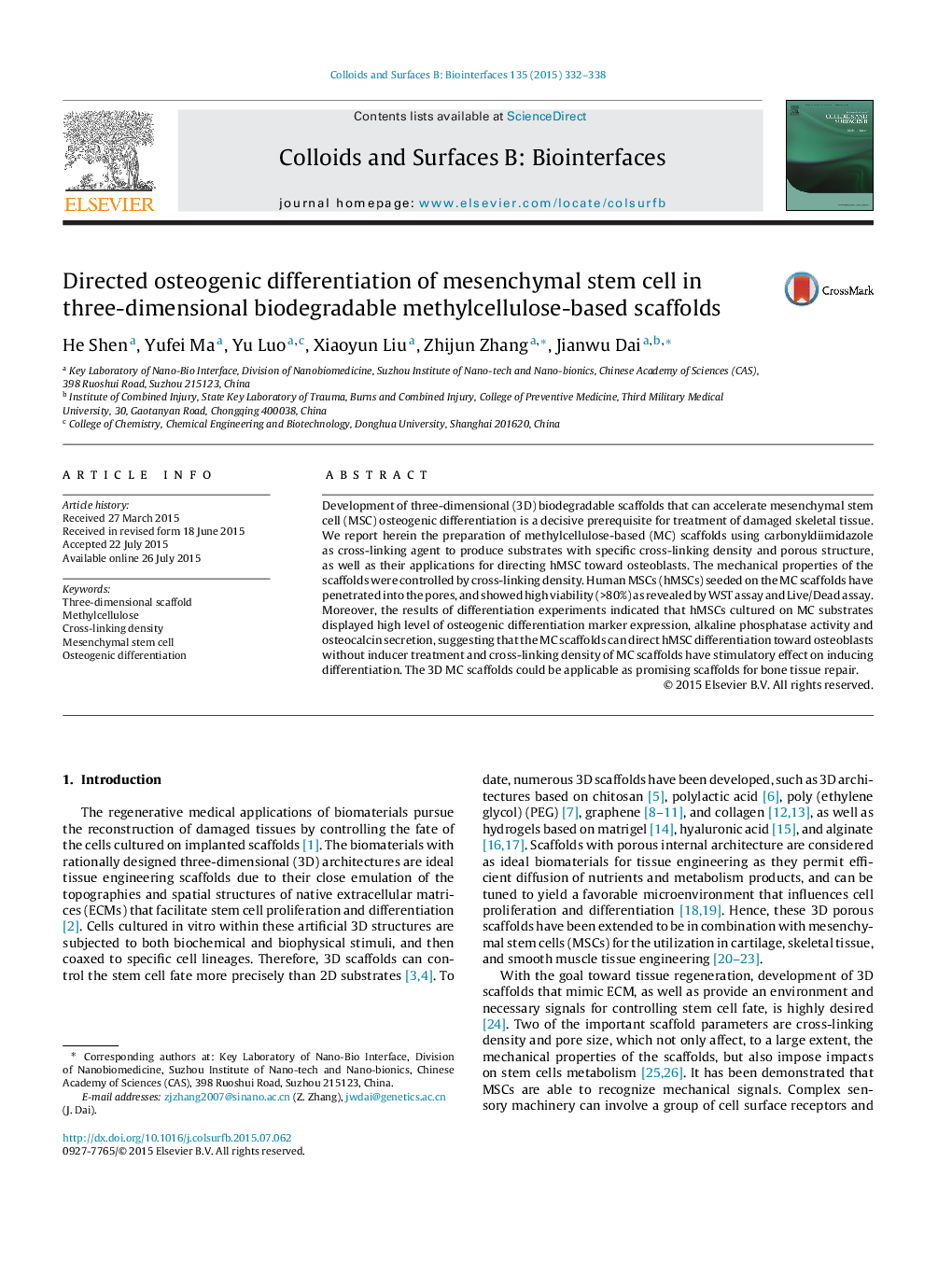| Article ID | Journal | Published Year | Pages | File Type |
|---|---|---|---|---|
| 599249 | Colloids and Surfaces B: Biointerfaces | 2015 | 7 Pages |
•Preparation of MC scaffolds with three-dimensional porous structure for regulating the fate of MSCs.•Direction osteogenic differentiation of MSCs via MC scaffolds.•Stimulatory effect of mechanical properties and 3D structure of the MC scaffolds on inducing the stem cell differentiation without osteogenic inducer supplement.
Development of three-dimensional (3D) biodegradable scaffolds that can accelerate mesenchymal stem cell (MSC) osteogenic differentiation is a decisive prerequisite for treatment of damaged skeletal tissue. We report herein the preparation of methylcellulose-based (MC) scaffolds using carbonyldiimidazole as cross-linking agent to produce substrates with specific cross-linking density and porous structure, as well as their applications for directing hMSC toward osteoblasts. The mechanical properties of the scaffolds were controlled by cross-linking density. Human MSCs (hMSCs) seeded on the MC scaffolds have penetrated into the pores, and showed high viability (>80%) as revealed by WST assay and Live/Dead assay. Moreover, the results of differentiation experiments indicated that hMSCs cultured on MC substrates displayed high level of osteogenic differentiation marker expression, alkaline phosphatase activity and osteocalcin secretion, suggesting that the MC scaffolds can direct hMSC differentiation toward osteoblasts without inducer treatment and cross-linking density of MC scaffolds have stimulatory effect on inducing differentiation. The 3D MC scaffolds could be applicable as promising scaffolds for bone tissue repair.
Graphical abstractFigure optionsDownload full-size imageDownload as PowerPoint slide
